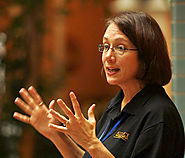-
About
- About Listly
- Community & Support
- Howto
- Chrome Extension
- Bookmarklet
- WordPress Plugin
- Listly Premium
- Privacy
- Terms
- DMCA Copyright
- © 2010-2025 Boomy Labs

 Ashley Lee
Ashley Lee
Listly by Ashley Lee
This list consists of lesson plans designed to foster 21st-century learning skills for middle school students. (Grades 6-8)
"Skills to Pay the Bills: Mastering Soft Skills for Workplace Success," is a curriculum developed by ODEP focused on teaching "soft" or workforce readiness skills to youth, including youth with disabilities. Created for youth development professionals as an introduction to workplace interpersonal and professional skills, the curriculum is targeted for youth ages 14 to 21 in both in-school and out-of-school environments. The basic structure of the program is comprised of modular, hands-on, engaging activities that focus on six key skill areas: communication, enthusiasm and attitude, teamwork, networking, problem solving and critical thinking, and professionalism.

Common Sense Media improves the lives of kids and families by providing independent reviews, age ratings, & other information about all types of media.

Help your students become socially-savvy through lessons on attitude, boundaries, and more .
Students will be introduced to entrepreneurship and learn how inventing a product can lead to becoming an entrepreneur. The story of Maurice Scales, an American child inventor, will be read. Students will be given categories for possible inventions, brainstorm ideas and create their own invention or innovation. They will complete their product description and diagram for a page in
a class’ book.

What does it mean to be a team? To be able to work together to succeed. We review what it means to succeed and have goals.

This lesson plan, adaptable for grades 3-12, features the innovative game Digital Compass, in which players explore how decisions they make in their digital lives affect other aspects of their lives. Through a choose-your-own-path format, students play through the perspective of one of eight main characters, each of whom is facing a different digital citizenship dilemma, from cyberbullying to relationships and communication. The varied story paths and multiple decision points encourage students to play repeatedly in order to explore alternative courses of action.
This critical thinking lesson presents two classic problems (Mangoes Problem and Sailors and Coconuts) that can be represented and solved in several different ways. Middle-grades students work in groups on the problems to promote communication of mathematical ideas, and a variety of classroom solution attempts are described.
Communication is what we do to give and get understanding; it is the process of sending and receiving messages. Successful communication occurs when there is understanding. Communication can be verbal, using oral language to convey a message, or nonverbal, including facial expressions, body language, text or written based language. Sometimes a message’s original meaning gets lost in the translation between thought and the act of communicating it. Teaching young people how to communicate effectively helps them maintain healthy relationships, resolve conflicts peacefully, excel in school, and eventually get and keep
jobs.

Lessons in this section focus on teaching about leadership, leadership styles, and what it takes to be an effective leader.
